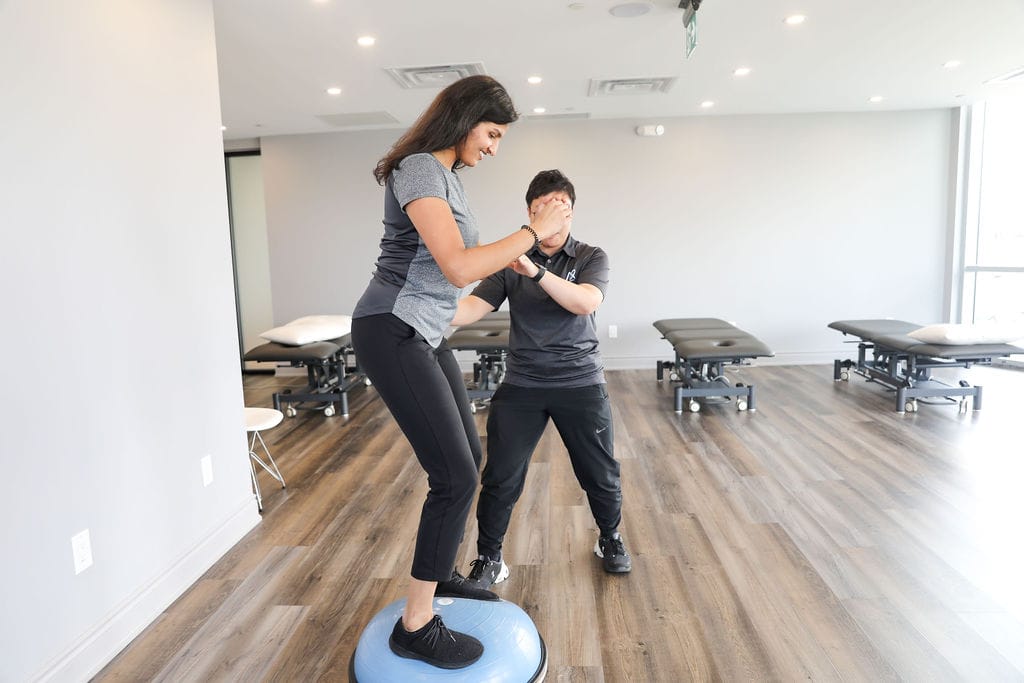Undergoing any type of surgery can be a daunting experience, especially when you are dealing with pain or discomfort in the lead-up to the procedure. For many patients, managing pain before surgery can be as crucial as the surgery itself, both in terms of improving the surgical outcome and enhancing recovery. Physiotherapy is an essential part of this pre-surgical care, providing strategies to manage pain, improve mobility, and prepare the body for the challenges of surgery and rehabilitation. The highly trained physiotherapists at Triangle Physiotherapy can advise you on strategies on managing pain before surgery and how it can help you feel stronger, more comfortable, and better equipped for recovery.
What is Pre-Surgical Physiotherapy?
Pre-surgical physiotherapy, often referred to as “prehabilitation,” is the practice of preparing the body before surgery through a series of targeted exercises, education, and therapies. The goal is to improve physical fitness, increase mobility, and reduce pain prior to undergoing surgery. By strengthening muscles, improving joint mobility, and reducing stress on affected areas, prehabilitation can make the body more resilient during the recovery process and even reduce the risk of complications after surgery.

The Importance of Managing Pain Before Surgery
Chronic pain, whether from conditions like arthritis, injuries, or musculoskeletal disorders, can be overwhelming and can negatively affect the body’s ability to heal post-surgery. Pre-surgical pain management is not just about addressing discomfort; it’s about setting the stage for a smoother recovery. Here’s why it’s essential to manage pain before surgery:
- Reducing the Impact of Surgery on the Body
Chronic pain can weaken muscles and joints, affecting overall mobility. If these issues are not addressed before surgery, they can impede recovery, increase stress on the surgical site, and lengthen the rehabilitation process. By managing pain pre-operatively, you can make the body more capable of handling the stresses of surgery. - Improved Post-Surgical Outcomes
Research has shown that patients who engage in pre-surgical physiotherapy tend to have better outcomes following surgery. They often experience reduced pain post-operation, faster healing, and a quicker return to normal activities. - Preventing Muscle Atrophy and Stiffness
When dealing with long-term pain, it’s common to limit movement in order to avoid discomfort. This inactivity can lead to muscle atrophy (weakening) and joint stiffness. Physiotherapy helps maintain and even improve strength and flexibility before surgery, ensuring the body is in the best possible condition for a smooth recovery.
How Physiotherapy Can Help Manage Pain Before Surgery
Physiotherapists are experts in movement and pain management, and they can develop tailored treatment plans that address the specific needs of each individual. Here’s how physiotherapy can help manage pain before surgery:
- Pain Relief Techniques
Physiotherapists use a variety of manual therapy techniques to reduce pain and improve joint function. These may include:- Massage therapy to relax muscles and reduce tension.
- Joint mobilizations to increase range of motion and alleviate stiffness.
- Myofascial release to address tightness and discomfort in the soft tissues.
- These techniques can help reduce the intensity of pain, making it easier to engage in exercises and movements that promote healing.
- Strengthening Exercises
Weak muscles can contribute to pain and difficulty moving. Physiotherapists can develop a customized exercise program to strengthen muscles around the affected joints, improving stability and reducing the strain on pain-prone areas. Strengthening key muscle groups ensures that the body is well-prepared for the demands of surgery and recovery. - Mobility and Flexibility Training
Stiffness in the joints and muscles can exacerbate pain and hinder movement. Physiotherapists incorporate stretching and flexibility exercises into pre-surgical programs to improve range of motion. Whether it’s the hips, knees, or shoulders, increasing flexibility can reduce discomfort and prevent further limitations, allowing for better post-surgical rehabilitation. - Postural Correction
Poor posture can put additional strain on joints and muscles, exacerbating pre-existing pain. Physiotherapists assess your posture and provide education on how to align your body correctly during daily activities. Proper posture can prevent unnecessary pressure on joints and muscles, reducing pain and discomfort before surgery. - Education and Pain Management Strategies
Physiotherapists teach patients how to manage pain more effectively through techniques like breathing exercises, mindfulness, and relaxation strategies. Additionally, they may provide advice on managing pain at home, such as the use of heat or cold therapy and ergonomic adjustments in daily activities.
When Should You Seek Pre-Surgical Physiotherapy?
If you’re preparing for surgery and are experiencing pain, stiffness, or limited mobility, it’s a good idea to seek physiotherapy before your procedure. The sooner you begin prehabilitation, the better the results. Ideally, pre-surgical physiotherapy should begin a few weeks to months before the surgery date. However, even if you’re closer to your surgery, starting physiotherapy as soon as possible can still provide significant benefits.
Where can I find a Pre-Surgical Physiotherapy clinic in Oakville?
Triangle Physiotherapy has 8 locations in the GTA, with a physiotherapy clinic in Oakville, located at 2501 Prince Michael Drive, Oakville ON L6H7V6.
Book your prehabilitation appointment today to ensure you get the best outcomes from your surgery.
A rotator cuff tears are common injuries to the shoulder, involving a tear in one or more of the tendons of the rotator cuff muscles. It is one of the leading causes of shoulder pain and disability. The rotator cuff is a group of four muscles and their tendons that stabilize the shoulder and allow for its wide range of motion.
Understanding Rotator Cuff Tears: Causes and Symptoms

The rotator cuff is a group of four muscles and their tendons that stabilize the shoulder and allow for its wide range of motion. These muscles are:
- Supraspinatus
- Infraspinatus
- Teres minor
- Subscapularis
Types of Rotator Cuff Tears
- Partial Tear: This type of tear damages the tendon but does not completely sever it.
- Complete Tear: Also known as a full-thickness tear, this type involves the tendon being split into two pieces or pulled completely off the bone.
Causes
- Acute Injury: Sudden injuries, such as a fall on an outstretched arm or lifting something heavy with a jerking motion.
- Degenerative Wear and Tear: Gradual wear over time due to aging, repetitive stress from activities (like sports or certain jobs), or poor shoulder mechanics.
Symptoms
- Pain at rest and at night, particularly if lying on the affected shoulder
- Pain when lifting and lowering your arm or with specific movements
- Weakness in the shoulder
- Crackling sensation when moving the shoulder in certain positions
Importance of Physiotherapy in Rotator Cuff Tear Treatment
Physiotherapy plays a crucial role in the treatment and rehabilitation of rotator cuff tears. It can help in several ways, whether as a primary treatment for less severe tears or as a post-surgical rehabilitation strategy for more significant injuries. Here are some key points highlighting the importance of physiotherapy in rotator cuff tear treatment:
Pain Reduction
- Manual Therapy: Techniques such as massage and joint mobilization can help reduce pain and improve shoulder function.
- Modalities: Use of heat, ice, ultrasound, and electrical stimulation can help manage pain and inflammation.
Restoring Range of Motion
- Stretching Exercises: Specific stretches help maintain and gradually improve shoulder flexibility.
- Mobilization Techniques: Gentle mobilization can help increase the range of motion without causing further injury.
Strengthening Shoulder Muscles
- Strengthening Exercises: Focused on the rotator cuff and surrounding muscles, these exercises help restore strength and function to the shoulder.
- Progressive Resistance: Gradual increase in resistance helps to build muscle strength over time.
Improving Shoulder Stability
- Proprioceptive Training: Exercises that improve the body’s ability to sense the position and movement of the shoulder, enhancing stability.
- Functional Training: Exercises tailored to improve stability during daily activities and specific movements required in sports or work.
Enhancing Surgical Outcomes
- Pre-Surgical Physiotherapy (“Prehabilitation”): Strengthening and conditioning the shoulder before surgery can lead to better post-surgical outcomes.
- Post-Surgical Rehabilitation: Structured physiotherapy is essential to restore function, strength, and range of motion after surgery. It also helps minimize scar tissue formation and adhesions.
Preventing Further Injury
- Education: Teaching proper shoulder mechanics and ergonomic principles to avoid movements that can exacerbate the injury.
- Exercise Regimen: Developing a long-term exercise plan to maintain shoulder health and prevent future injuries.
Tailored Rehabilitation Programs
- Individualized Plans: Physiotherapists create personalized treatment plans based on the specific nature of the tear, the patient’s overall health, and their functional goals.
- Goal Setting: Setting realistic and progressive goals to keep the patient motivated and track progress.
Long-Term Shoulder Health
- Maintenance Exercises: Developing a routine of exercises to be continued even after formal physiotherapy ends to maintain shoulder health.
- Lifestyle Modifications: Advice on modifications to daily activities and sports techniques to protect the shoulder.
In summary, physiotherapy is an integral part of the comprehensive management of rotator cuff tears, offering a non-invasive approach to pain relief, functional restoration, and long-term shoulder health. It provides a structured and supportive environment for recovery, whether used alone or in conjunction with surgical treatments.
Click here to book an appointment with a physiotherapist at one of our eight locations.
- Physiotherapy Etobicoke – Triangle Physiotherapy Etobicoke
- Oakville Physiotherapy Clinic – Triangle Physiotherapy Oakville
- Physiotherapy North York – Triangle Physiotherapy North York
- Mississauga Physiotherapy Clinics – Triangle Physiotherapy Mississauga
- Downtown Physiotherapy Clinics – Triangle Physiotherapy King West
- Uptown Physiotherapy Clinics – Triangle Physiotherapy Lawrence Park
- Physiotherapy Clinic Downtown Toronto – Triangle Physiotherapy Queens Quay
- Physiotherapy Clinics Mississauga – Triangle Physiotherapy Erin Mills
“Rotator cuff tears require expert treatment and rehabilitation to restore function and reduce pain. Triangle Physiotherapy offers specialized care across the GTA. Whether you’re seeking Physiotherapy in Etobicoke, Oakville, North York, Toronto, Lawrence Park, Queens Quay, Erin Mills, Mississauga, or Liberty Village, our experienced team is here to help you on your recovery journey.”
Physiotherapy is often recommended before considering surgery for a variety of musculoskeletal conditions and injuries. The decision to try physiotherapy before surgery depends on several factors, including the nature and severity of the condition, the patient’s overall health, and the specific goals of treatment.
What are some of the scenarios where physiotherapy is considered before surgery?
Here are some common scenarios where physiotherapy is advised before opting for surgery:
- Chronic Pain Management:
- Conditions like chronic back pain, neck pain, or osteoarthritis can often be managed with physiotherapy. Techniques such as exercise, manual therapy, and education can help reduce pain and improve function.
- Rehabilitation after Injury:
- For injuries such as sprains, strains, and minor fractures, physiotherapy can aid in healing and restore mobility and strength without the need for surgical intervention.
- Degenerative Joint Diseases:
- For conditions like osteoarthritis, physiotherapy can help maintain joint function, improve strength, and reduce pain, potentially delaying or avoiding the need for joint replacement surgery.
- Sports Injuries:
- Many sports-related injuries, including tendonitis, ligament sprains, and muscle tears, can be effectively treated with physiotherapy. Rehabilitation programs can restore function and allow a safe return to activity.
- Postural and Muscular Imbalances:
- Conditions resulting from poor posture or muscular imbalances, such as certain types of shoulder impingement or knee pain, can often be corrected through targeted physiotherapy exercises and manual therapy.
- Non-Surgical Management of Disc Herniations:
- In cases of herniated discs causing back or neck pain, physiotherapy can help reduce symptoms through specific exercises and modalities, sometimes avoiding the need for surgical intervention.
- Rehabilitation of Neurological Conditions:
- For certain neurological conditions like stroke, multiple sclerosis, or Parkinson’s disease, physiotherapy plays a crucial role in managing symptoms and improving quality of life.
- Post-Surgical Rehabilitation:
- In cases where surgery is eventually necessary, pre-surgical physiotherapy (prehabilitation) can help strengthen the body, improve overall fitness, and enhance recovery post-surgery.
- Conservative Management First:
- For many conditions, especially those where surgery carries significant risks or has variable outcomes, conservative management with physiotherapy is often the first line of treatment to try less invasive options.
What are the benefits of trying physiotherapy before opting for surgery?
Trying Physiotherapy Oakville before opting for surgery offers numerous benefits, both physical and psychological. Here are some key advantages:
Physical Benefits of Physiotherapy
- Pain Reduction:
- Physiotherapy can effectively reduce pain through various techniques such as manual therapy, exercises, and modalities like heat or cold therapy, electrical stimulation, and ultrasound.
- Improved Mobility and Function:
- Targeted exercises and stretches can help improve range of motion, strength, and overall functional ability, allowing patients to perform daily activities with greater ease.
- Enhanced Healing and Recovery:
- Physiotherapy promotes natural healing by improving blood flow, reducing inflammation, and preventing further injury through proper movement patterns.
- Strengthening and Stabilization:
- Physiotherapists design personalized exercise programs to strengthen muscles and stabilize joints, which can prevent the need for surgery by addressing the underlying causes of pain and dysfunction.
- Injury Prevention:
- By improving posture, body mechanics, and muscle balance, physiotherapy can reduce the risk of future injuries.
- Management of Chronic Conditions:
- For chronic conditions like osteoarthritis, physiotherapy can help manage symptoms and slow the progression of the disease, potentially delaying or avoiding the need for surgery.
Psychological and Emotional Benefits
- Reduced Anxiety and Stress:
- The prospect of surgery can be daunting. Physiotherapy offers a non-invasive approach that can alleviate anxiety and stress related to surgical procedures and recovery.
- Increased Confidence and Empowerment:
- Patients often feel more in control of their health when actively participating in their treatment through physiotherapy, leading to improved mental well-being.
- Better Understanding of Condition:
- Physiotherapists educate patients about their condition and the mechanics of their body, providing them with knowledge and strategies to manage their symptoms effectively.
Economic and Practical Benefits
- Cost-Effective:
- Physiotherapy is generally less expensive than surgery and associated hospital stays, making it a cost-effective alternative for many patients.
- Reduced Recovery Time:
- While surgery often requires significant recovery time, physiotherapy allows patients to continue their daily activities with minimal interruption, enhancing their quality of life.
- Avoiding Surgical Risks:
- Surgery carries inherent risks such as infection, complications from anesthesia, and prolonged recovery periods. Physiotherapy avoids these risks by offering a non-invasive treatment option.
- Trial of Conservative Management:
- Trying physiotherapy first allows for the possibility that conservative management might be sufficient. If it proves ineffective, surgery can still be considered as a subsequent option.
Long-term Health Benefits
- Development of Healthy Habits:
- Physiotherapy encourages the adoption of healthy habits and exercises that can contribute to long-term well-being and prevent future issues.
- Maintenance of Physical Fitness:
- Ongoing physiotherapy helps maintain physical fitness, flexibility, and strength, contributing to overall health and resilience against other potential health issues.
Click here to book an appointment with a physiotherapist at one of our eight locations.
- Physiotherapy Etobicoke – Triangle Physiotherapy Etobicoke
- Oakville Physiotherapy Clinic – Triangle Physiotherapy Oakville
- Physiotherapy North York – Triangle Physiotherapy North York
- Mississauga Physiotherapy Clinics – Triangle Physiotherapy Mississauga
- Downtown Physiotherapy Clinics – Triangle Physiotherapy King West
- Uptown Physiotherapy Clinics – Triangle Physiotherapy Lawrence Park
- Physiotherapy Clinic Downtown Toronto – Triangle Physiotherapy Queens Quay
- Physiotherapy Clinics Mississauga – Triangle Physiotherapy Erin Mills
Trying physiotherapy before opting for surgery can be a beneficial step in managing pain and improving function. If you’re considering this approach, you can find expert physiotherapy in Etobicoke, Oakville, North York, Toronto, Lawrence Park, Queens Quay, Erin Mills, Mississauga, or Liberty Village to help you explore non-surgical options and make informed decisions about your health.




